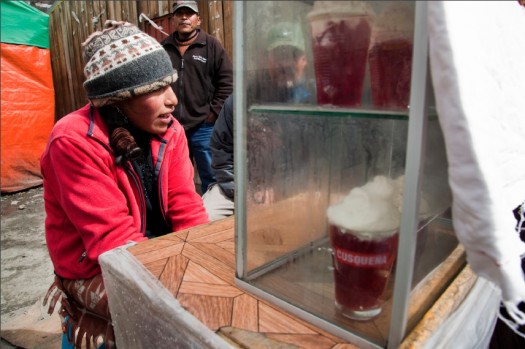
How the Education of Girls Can Change the World

Senna, fourteen, sells her gelatins in a Peruvian town that’s the highest human habitation in the world. Since her father’s death, this—and her mother’s work crushing rock—represents her family’s only income.
In our Fall 2012 issue, guest editor Marie Arana writes about traveling to the mining town of La Rinconada, which sits on a glacial peak more than 18,000 feet up in the Peruvian Andes. She went there to write about one brave child for a feature film. The movie, which will be released in May 2013, has spurred a worldwide international campaign to raise public awareness about the urgency of educating the world’s female young. Of more than 100 million out-of-school children around the globe, the overwhelming majority are girls. What is it that makes them worth the investment? Marie Arana writes:
I first learned of the transformational power of girls’ education from a 2009 Harvard report on social research, but many in the academy had heard of it long before. Hard, rigorous data [proves] that in pockets around the globe, ten- to fourteen-year-old girls might be the key to breaking cycles of poverty. Educating a nation’s girl-children, as it turned out, shrank overpopulation, raised overall incomes, and could change the fabric of a whole nation. By targeting girls, a village’s productivity could be made to go up; the incidence of AIDS, down. Literacy would increase; infant mortality, plummet. As one corporate leader in America put it: Educating this segment of the population is a country’s “best possible return on investment” with far-reaching implications for the global economy. In short, by educating girls, you can change the world.
Read about Marie Arana’s trip to La Rinconada, and the girl she met there. Or, get the Fall 2012 issue in print.

